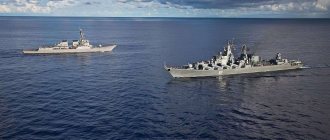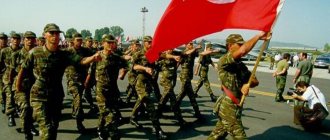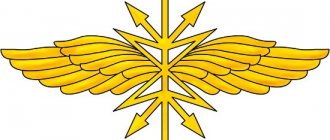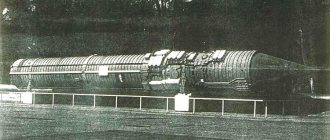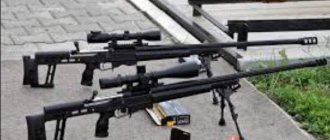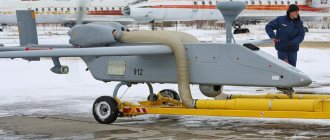US Navy Aviation
Over its more than century-long history, US naval aviation has come a long way in development, becoming one of the main types of weapons of the Navy.
Already during the Second World War, US Navy aviation proved its decisive role in victory in the Pacific. Subsequently, she actively participated in the wars in Korea, Vietnam, the Persian Gulf, and the global war against terror. Its numbers decreased noticeably after the end of the Cold War, but this reduction was partially offset by qualitative improvements in aviation technology, radio electronics, and weapons.
MODERN ORGANIZATION
Traditionally, US Navy aviation is distributed between two fleets - the Pacific and the Atlantic, with the commander of the air forces of the Pacific Fleet simultaneously leading all naval aviation. Its headquarters is located at Whidbey Island Air Force Base (California). In total, the US Navy has 12 aircraft carriers and approximately 25 coastal air bases. About 100 thousand personnel serve in aviation.
DECK AVIATION
Deck-based aviation is the most numerous branch of the Navy's aviation force. The specificity of its application led to the presence of a dual organization: administrative and operational. According to the first of them, the squadrons are organized into wings according to their intended purpose: two fighter-attack, two AWACS and one electronic warfare aircraft (as part of the Pacific Fleet). According to the operational organization, carrier-based aviation is divided into carrier-based air wings, each of which is assigned to one of the aircraft carriers. The typical composition of a deck wing includes four fighter-attack squadrons (VFA; 12 aircraft each), one squadron of AWACS aircraft (VAW; four aircraft) and one electronic warfare aircraft (VAQ; four aircraft).
Read: Aircraft T-6A “TEKSAN” II
The main type of carrier-based combat aircraft is the F/A-18E/F Super Hornet. 29 squadrons are armed with such vehicles. 17 of them operate single-seat F/A-18Es, 10 operate double-seat F/A-18Fs, and two more are combat training and have a mixed crew. Eight fighter attack squadrons are armed with older F/A-18C Hornets. They should be replaced by new carrier-based fighter-bombers F-35C Lightning II, but so far only one combat training squadron has them - VFA-101.
Squadrons of electronic warfare aircraft are armed with EA-18G “Growler” vehicles (modification of F/A-18F). The Naval Air Force has 15 such squadrons, including two combat training ones. Squadrons of AWACS aircraft (11 in total, including one combat trainer) operate primarily E-2C Hawkeye aircraft. The exception is the VAW-125 squadron, re-equipped with more modern E-2D aircraft (their deliveries continue).
COMBAT HELICOPTERS
The main type of helicopters of the US Navy became various modifications of the Sea Hawk. In particular, 17 maritime combat squadrons (HSC) are armed with MH-60S helicopters. Two more (HSC-84 and HSC-85) have HH-60N helicopters and are designed to support naval special forces operations. 15 naval strike squadrons (HSM) are armed with MH-60R vehicles. Finally, three squadrons of minesweeper helicopters include heavy MH-53E Sea Dragon helicopters.
Read: Northrop YF-23 fighter is an unlucky competitor to the Raptor
BASE PATROL AVIATION
For many years, the main type of base patrol aircraft of the US Navy was the P-3C Orion. Currently, such vehicles serve in ten patrol squadrons (VP). Three more squadrons have been re-equipped with new P-8A Poseidon aircraft, and three are in the process of being re-equipped. If during the Cold War, patrol aircraft performed primarily anti-submarine functions, now the range of its tasks has expanded significantly.
TRANSPORT AND AUXILIARY AVIATION
The US Navy operates 14 transport squadrons (VR). Two of them (VR-30 and VR-40) are armed with carrier-based C-2A Greyhound aircraft and are designed to deliver people and urgent cargo to aircraft carriers. The remaining squadrons are shore-based units. They operate two main types of aircraft: the turboprop C-130T Hercules and the jet C-40A Clipper (a modification of the civilian Boeing 737). The VQ-1 electronic reconnaissance squadron is armed with EP-3E aircraft, and the three strategic communications squadrons (VQ-3, VQ-4 and VQ-7) are armed with E-6B aircraft.
A special place is occupied by three mixed fighter squadrons (VFC) - they are armed with F/A-18C (VFC-12) or F-5N (VFC-13 and VFC-111) aircraft and are staffed by the most experienced pilots, who designate a mock enemy during exercises.
Read: Pistols “Desert Eagle” and “Jericho 941” (Israel-USA)
TRAINING AVIATION
The US Navy operates 14 fixed-wing (VT) and three helicopter (HT) training squadrons. The latter are equipped with TN-57 (Bell 206) vehicles. Six aircraft squadrons providing initial training have T-6B turboprop aircraft. Four, training pilots for carrier-based aviation, operate T-45 jets. Another four squadrons train pilots and navigators for multi-engine aircraft. They are equipped with T-39, T-44 and TS-12 vehicles.
You might be interested:
- USMC - Aviation Component
- Brazilian Air Force
- US Pacific Fleet - organization and composition
- Modern naval aviation
- US Fleet Command - former Atlantic Fleet
- Malaysian Air Force
Subscribe to
our channel in Yandex.Zen
How the US Navy is falling apart
05/26/2017, shopping center "Zvezda".
The once leading naval armada of the planet may in the future find itself in second, or even third, roles in the world. Analysts come to this conclusion when assessing the state and development plans of the US fleet, including the financial component. The construction of new ships, as well as maintaining the existing squadron afloat, require enormous investments, but allocations for these purposes are not so generous.
In addition, as experts note, not all of the implemented projects were successful (except for the image effect, as in the case of the futuristic Zumvolt). “They are no longer afraid of us!” - they exclaim with annoyance at the Pentagon, referring to the ultimatums presented to Washington by those who until recently were not considered worthy partners...
From a position of strength
In particular, the Chinese side recently expressed its dissatisfaction with the actions of the American fleet in the South China Sea. Beijing has warned the US that the White House risks seriously undermining negotiations between the parties involved. The announcement came after the US Navy guided-missile destroyer Dewey passed within 12 nautical miles of an artificial island built by China in the disputed waters of the Spratly archipelago. Moreover, China called on the United States to “correct the mistake and refrain from further patrolling in this area.” And Chinese Foreign Ministry spokesman Lu Kang even warned that “such maneuvers could lead to unexpected disasters at sea and in the air.”
Meanwhile, the American side called this trip “an operation to confirm freedom of navigation.” It is known that the islands in the South China Sea are the subject of a territorial dispute between China, Taiwan, Malaysia, the Philippines, Brunei and Vietnam. The most tense situation remains around the Scarborough Reef, as well as the southern Spratly archipelago, which is believed to be rich in oil and gas. Last year, an arbitration court in The Hague determined that Beijing has no rights to the disputed territories. In response, Chinese President Xi Jinping said that these islands have been known as an integral part of Chinese territory since ancient times.
Until recently, such behavior would have been considered unheard of impudence - to dare to express dissatisfaction with the presence of an American warship, and even threaten “disasters”! However, Beijing's gesture was not without reason. And there are at least two of them: their own naval forces, confidently taking their place in the World Ocean, and also the far from brilliant state of the fleet of the rival side, that is, the United States. In particular, the Pentagon’s secret mouthpiece, the American magazine The National Interest, recently reported that the US naval forces are currently in distress. Well-known expert Dave Majumdar emphasized in his article that Congress does not approve the budget the fleet needs, which is why funding does not make it possible to distribute money for necessary purposes. Which, in turn, does not reflect for the better on the IUDs and their quality condition.
Naval suffering
The publication in question contains negative opinions about the current situation from career sailors. Thus, Admiral of the US Navy John Richardson admitted that today most of the fleet is in a deplorable state. A number of ships and submarines, the admiral stated, are not at all capable of moving, since they are not maintained. Things are no better in the Marine Corps. The representative of this branch of troops, General Robert B. Neller, was forced to admit that more than half of the strike fighters in the Marine forces simply could not take off. The reason is serious delays in the repair schedule, as well as a banal lack of spare parts.
But until recently, the US Navy was called one of the foundations of America’s power, with the help of which it resolves its geopolitical issues around the world. It is known that the United States does not hesitate to use warships in its colonial “showdowns.” The same direction of aircraft carrier strike groups has become almost the “calling card” of American “diplomacy”. However, here, too, there are gaps that are annoying for the United States. Thus, the recent militant campaign of the AUG led by the aircraft carrier Carl Vinson to the shores of the DPRK turned into a cruise trip after the North Korean leader promised the Americans an adequate response to a possible attack on his country. Of the latest “victories” of the US fleet, only the unpunished execution of the Syrian army air garrison in Shayrat. The strike was carried out from the side of one of the US Navy ships, while the Syrians could neither defend against this raid nor respond to it. By the way, the bravura report of the naval command on this “operation” was overshadowed by the objective control data presented a little later. It turns out that almost half of the missiles fired at Shayrat simply did not reach the airbase, and those that did reach their target did not cause any serious damage to its infrastructure.
Of course, for the sake of objectivity, it is necessary to admit that the United States still holds the palm in terms of the size of its navy. With six hundred combat units, this armada is the most impressive on the planet. The American Navy has the largest number of aircraft-carrying ships compared to the fleets of other states, as well as the largest underwater segment. In addition, we must not forget that US naval bases are scattered throughout the world.
Stretch your legs over your clothes
“I wouldn’t even stretch it to say that everything is perfect in the American Navy,” notes fleet historian, retired captain 2nd rank, member of the Union of Journalists of Russia Sergei Stolyarov. — Yes, the United States leads in the number of aircraft carriers. But how many of them are actually present in the seas? Of the 11 units, at best four, the rest are either mothballed or undergoing repairs. Let's look at the submarine fleet. Most of the multipurpose submarines are Los Angeles-class submarines, which are objectively considered obsolete and are gradually being decommissioned. The main surface ship of the American Navy, the Arleigh Burke-class destroyer, can also be called a fleet veteran. In turn, the Zumvolt, advertised as its replacement, is subject to justified criticism, primarily due to its enormous cost. It is no coincidence that with the original plans to create 32 such ships, only three are currently planned to be built.”
It is the financial component that becomes decisive when choosing directions for the development of the US fleet. It's getting ridiculous - the program for building corvettes such as Freedom and Independence, even before it has even really started, is already being adjusted and sequestered. Not a trace remains of the original plans for the construction of 55 such ships, experts point out. According to the already mentioned Dave Majumdar, if the Trump administration does not increase spending on both the maintenance of military equipment and the purchase of new ones, then the American fleet will face serious problems. Meanwhile, according to available information, according to the plan for the 2020 fiscal year, the budget of the Navy and Marine Corps is facing another sequestration. Despite the fact that the costs of combat service and maintenance are expected to increase, the costs of shipbuilding itself, as well as the purchase of aircraft equipment, will be significantly reduced.
“And the nature of the orders is too pessimistic,” notes political scientist, candidate of historical sciences Mikhail Urgalkin. “So, it is planned to build only two submarines of the Virginia class, which is considered far from perfect, as well as two destroyers of the Arleigh Burke class. In total, according to available data, the US Navy may receive 12 ships next year, and this, believe me, is quite a bit for such a huge fleet as theirs.”
On the principles of reasonable sufficiency
According to experts, the US Navy today is at the very peak of its development. Further, judging by the plans, as well as the financial sentiment in the American establishment, only a recession is possible. Already today, the Navy command is forced to take unpopular steps, for example, increasing the duration of autonomous navigation of its submarines, as well as extending their operation period and overhaul intervals. Against this background, Russia is demonstrating a more confident pace of commissioning modern naval forces. According to the State Rearmament Program until 2020, the Russian Navy should receive over fifty new warships. As Russian Defense Minister General of the Army Sergei Shoigu emphasized during his recent speech at the “Government Hour” in the Federation Council, last year the Navy included 24 ships and support vessels.
“The Naval Strategic Nuclear Forces have 9 modern strategic missile submarines in combat and provide continuous combat patrols in maritime areas,” the minister noted. “They are being systematically re-equipped with the latest Borei-class nuclear submarines. By 2021, the naval strategic nuclear forces are expected to have 13 submarines, including 7 promising Borei class submarines with new Bulava missile systems.
By the way, the Pentagon and the US Navy command are talking with alarm about the revival of the Russian Navy. The mentioned The National Interest noted this in one of its publications. “The Russian fleet has recovered from the terrible devastation that began after the Cold War, when the activity of submarine forces was practically stopped,” said the magazine’s expert, an employee of the Center for Naval Analysis, Michael Kofman, specializing in the Russian Armed Forces. — The Kremlin has implemented a series of reforms to improve the condition of the Navy. This concerned not only improving material conditions, but also improving the quality of personnel training. Russia has also made significant improvements by creating Project 955 Borei nuclear-powered missile submarines.
In turn, another expert of the magazine, defense and national security specialist Kyle Mizokami from San Francisco, notes the success of Project 877 submarines, which American sailors nicknamed the “black hole” because of its low noise. An improved version of this boat, under the name “Varshavyanka”, has been further improved in all areas, the expert emphasizes, including the ability to launch Caliber missiles.
Of course, it would be naive to paint everything only in rosy colors, comparing the potential of the two fleets. However, as Sergei Shoigu emphasized at the same “government hour,” Russia’s defense spending today is more than 11 times less than in the United States. And Russian President Vladimir Putin has repeatedly emphasized that our country does not intend to “accelerate” the arms race and is not going to spend a lot of money on it. “We will never agree to be drawn into an arms race and spend resources that we cannot afford,” the head of state said at his press conference in Moscow last year. At the same time, as the President of the Russian Federation noted, “Russia has done everything necessary in recent years to strengthen its defense capability.”
In this regard, one cannot help but cite the opinion of a naval commander respected among military sailors, the legendary Commander-in-Chief of the USSR Navy, Admiral of the Fleet of the Soviet Union Sergei Gorshkov. Speaking about the balance of the forces of the fleet, he argued that this is “so that all the elements that make up its combat power, and the means that provide them, are constantly in the most advantageous combination, in which the fleet can fully realize the ability to perform various tasks and act.” in any possible war."
Author: Dmitry Sergeev
Section: Analytics
